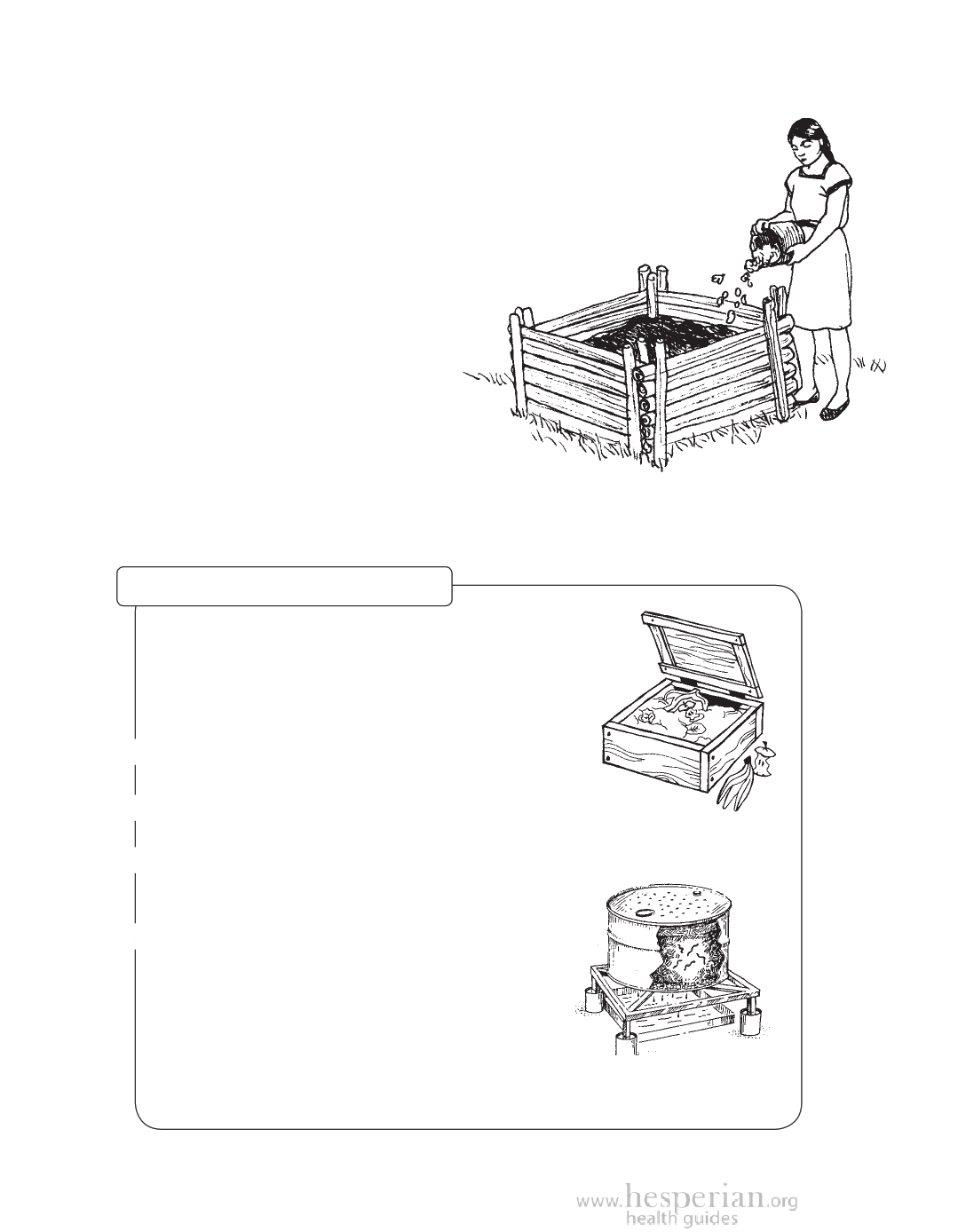
400 Solid Waste: Turning a Health Risk Into a Resource
Making compost: Changing organic waste to fertilizer
Because organic matter is usually the largest part of most waste,
separating and composting food scraps helps reduce waste a great deal.
Adding compost to the soil is a way of adding crop nutrients
back to the earth.
The best way to make compost
depends on the amount of space
available. Small amounts of
compost can be made in containers
in each household or business.
Larger composting sites can be set
up in towns and cities and on farms
where there is space for larger waste
piles. (To use compost, see page 287.)
Good, finished compost smells good
and feels soft like dark, rich forest soil.
How to compost with earthworms
Earthworms are one of nature’s best composters. A small
box with healthy earthworms will eat household food
wastes and turn the waste into rich soil for your garden.
A worm box provides a way to compost food scraps
when you have no land for a compost pile.
➊ Make holes in the bottom of a wooden or plastic box
to let air in, and water and soil out.
➋ Place a second box or tray under the box with holes.
This will collect the rich soil the worms make.
➌ Fill the top box with shredded paper, straw, and food
scraps. Get a good shovelful of worms from a
gardening center or a farmer, and put them in this box.
➍ Add food scraps often and keep the box damp but
not too wet. Cover the top to protect the worms
from sunlight.
A worm box can be
very simple...
As the worms eat what you put in the box, they make
rich soil, and the worm colony grows. Some worms
may drop down into the lower box or tray. Just put them
back into the top, or add them to your garden with the
new soil.
...or more
complicated.
A Community Guide to Environmental Health 2012